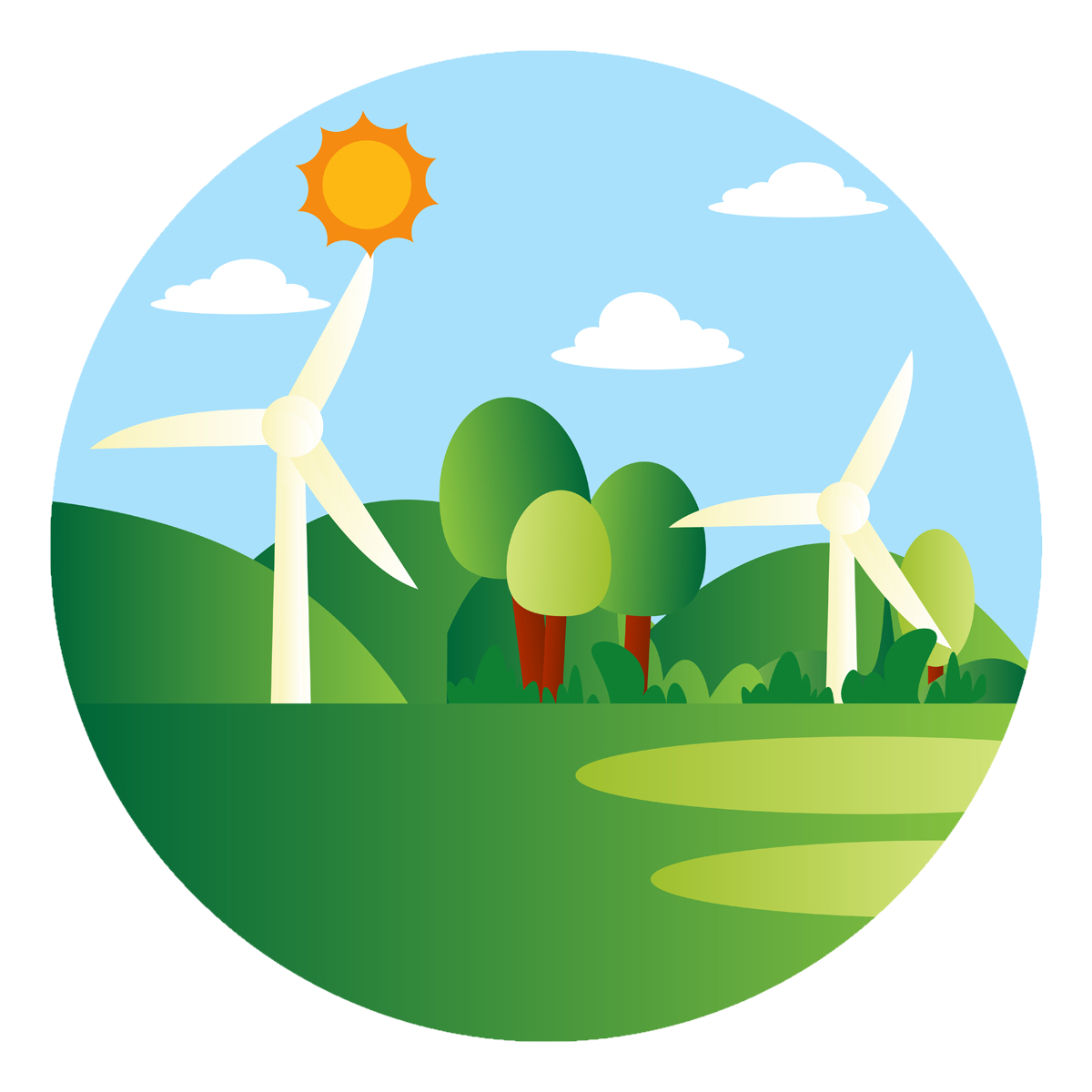Wind Power

Wind Power
wind power, form of energy conversion in which turbines convert the kinetic energy of wind into mechanical or electrical energy that can be used for power. Wind power is considered a renewable energy source. Historically, wind power in the form of windmills has been used for centuries for such tasks as grinding grain and pumping water. Modern commercial wind turbines produce electricity by using rotational energy to drive an electrical generator. They are made up of a blade or rotor and an enclosure called a nacelle that contains a drive train atop a tall tower.
The largest turbines can produce 4.8–9.5 megawatts of power, have a rotor diameter that may extend more than 162 metres (about 531 feet), and are attached to towers approaching 240 metres (787 feet) tall. The most common types of wind turbines (which produce up to 1.8 megawatts) are much smaller; they have a blade length of approximately 40 metres (about 130 feet) and are attached to towers roughly 80 metres (about 260 feet) tall. Smaller turbines can be used to provide power to individual homes. Wind farms are areas where a number of wind turbines are grouped together, providing a larger total energy source
Wind resources are calculated based on the average wind speed and the distribution of wind speed values occurring within a particular area. Areas are grouped into wind power classes that range from 1 to 7. A wind power class of 3 or above (equivalent to a wind power density of 150–200 watts per square metre, or a mean wind of 5.1–5.6 metres per second [11.4–12.5 miles per hour]) is suitable for utility-scale wind power generation, although some suitable sites may also be found in areas of classes 1 and 2. In the United States there are substantial wind resources in the Great Plains region as well as in some offshore locations. As of 2018 the largest wind farm in the world was the Jiuquan Wind Power Base, an array of more than 7,000 wind turbines in China’s Gansu province that produces more than 6,000 megawatts of power.
One of the world’s largest offshore active wind farms, the London Array, spans an area of 122 square km (about 47 square miles) in the outer approaches of the Thames estuary and produces up to 630 megawatts of power. Hornsea One, which will come online in 2020 and span an area of 407 square km (about 157 square miles) near England’s Yorkshire coast, will be even larger, producing about 1,200 megawatts of power. By comparison, a typical new coal-fired generating plant averages about 550 megawatts.
By 2016 wind was contributing approximately 4 percent of the world’s total electricity. Electricity generation by wind has been increasing dramatically because of concerns over the cost of petroleum and the effects of fossil fuel combustion on the climate and environment (see also global warming). From 2007 to 2016, for example, total installed wind power capacity quintupled from 95 gigawatts to 487 gigawatts worldwide. China and the United States possessed the greatest amount of installed wind capacity in 2016 (with 168.7 gigawatts and 82.1 gigawatts, respectively), and that same year Denmark generated the largest percentage of its electricity from wind (nearly 38 percent).
The wind power industry estimates that the world could feasibly generate nearly 20 percent of its total electricity from wind power by 2030. Various estimates put the cost of wind energy as low as 2–6 cents per kilowatt-hour, depending on the location. This is comparable to the cost of coal, natural gas, and other forms of fossil energy, which ranges between 5 and 17 cents per kilowatt-hour.
Challenges to the large-scale implementation of wind energy include siting requirements such as wind availability, aesthetic and environmental concerns, and land availability. Wind farms are most cost-effective in areas with consistent strong winds; however, these areas are not necessarily near large population centres. Thus, power lines and other components of electrical distribution systems must have the capacity to transmit this electricity to consumers. In addition, since wind is an intermittent and inconsistent power source, storing power may be necessary. Public advocacy groups have raised concerns about the potential disruptions that wind farms may have on wildlife and overall aesthetics.
Although wind generators have been blamed for injuring and killing birds, experts have shown that modern turbines have a small effect on bird populations. The National Audubon Society, a large environmental group based in the United States and focused on the conservation of birds and other wildlife, is strongly in favour of wind power, provided that wind farms are appropriately sited to minimize the impacts on migrating bird populations and important wildlife habitat.

